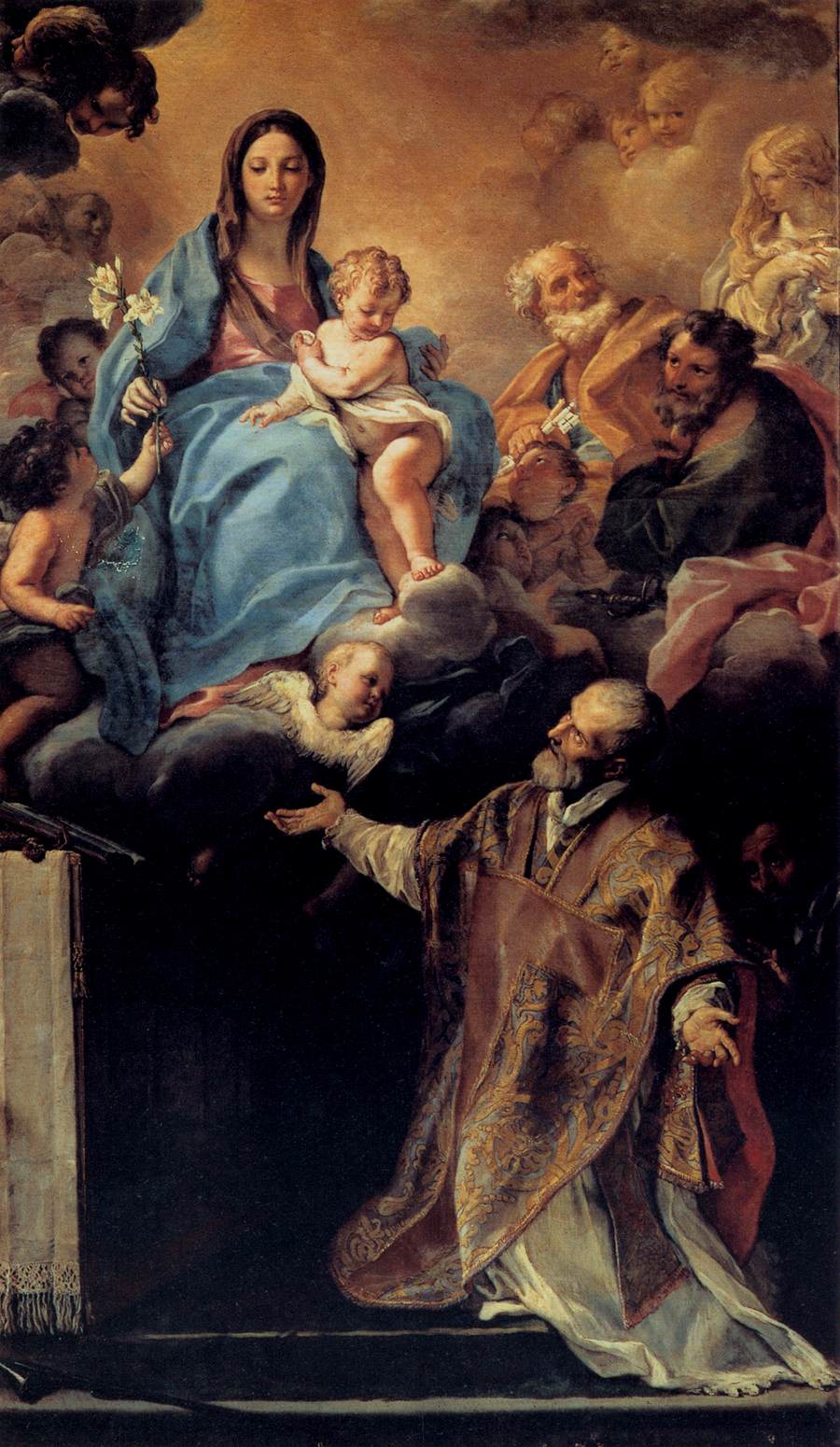 |
| Carlo Maratta - The Virgin appearing to St Philip Neri |
The Scriptures have much to tell of the
Mother of Jesus, and indeed, much more to tell us when we study her very few
words to us and the events surrounding her life.
The angel tells her, “Hail, full of
grace”. This literally means “You who are already filled with grace,” for the Greek perfect tense in which it is
expressed implies a present situation arising from something that has
happened in the past. If Mary is “filled with grace,” there is no
room for any sin within her. Mary’s flesh is already sinless when Jesus is
conceived, so that he might truly be “One like us in all things but sin.”
From this follows the teaching that Mary
never bore another child but Jesus. The Jewish leaders of Jesus’ time claimed
membership of God’s holy chosen people by virtue of their genetic descent. John
the Baptist tells them that this means nothing, that “God can raise up sons of
Abraham from these very stones.” Our only claim to a relationship with Jesus is
through baptism, by which we are reborn as adopted sons and daughters of God.
Mary’s visitation to Elizabeth her
cousin, six months pregnant with John the Baptist, has a profound message to us
as well. When Mary arrives and greets Elizabeth, Elizabeth says, “The moment I
heard your voice, the child in my womb leapt for joy. How blessed am I to
receive a visit from the mother of my Saviour!” The unborn John the Baptist
recognises the presence of the barely conceived Saviour, Jesus. This should
certainly make clear to us the preciousness of human life, and the evil of
abortion.
Finally, there are Mary’s words to the
angel and at the wedding at Cana. “I am the handmaid of the Lord; let what you
have said be done to me.” An engaged fourteen-year-old girl accepting a
pregnancy by no human agency; who would believe her? And facing a penalty of
death by stoning? What faith to accept God’s call in the face of such a
situation! Yet she did, and placed her faith, her life and her future completely
in God’s hands.
The other, at the wedding at Cana, when
Jesus turns water into wine, applies these words to our own lives. What an
embarrassing situation at a Jewish wedding; to run out of wine! Mary knows that
Jesus will act despite his reluctance, and tells the steward, “Do whatever he
tells you!” — “…whatever he tells you!” A strong command, but one which
saves the honour of the groom and allows the guests to continue to rejoice.
How often do we complain that God
doesn’t help us, that he seems to leave us high and dry? But do we do whatever
he tells us? Or only something of it, just in case God messes up and we have to
take things into our own hands? Mary placed her all in God’s hands, and as a
result her words “All generations shall call me blessed!” have become true in a
way she could never have imagined. Like Mary, doing whatever God tells us might
lead us to things we might never have imagined. And like Mary, we, too, will be
blessed in ways beyond our imagination if only we would do “whatever he tells
us.”
Fr Phillip

